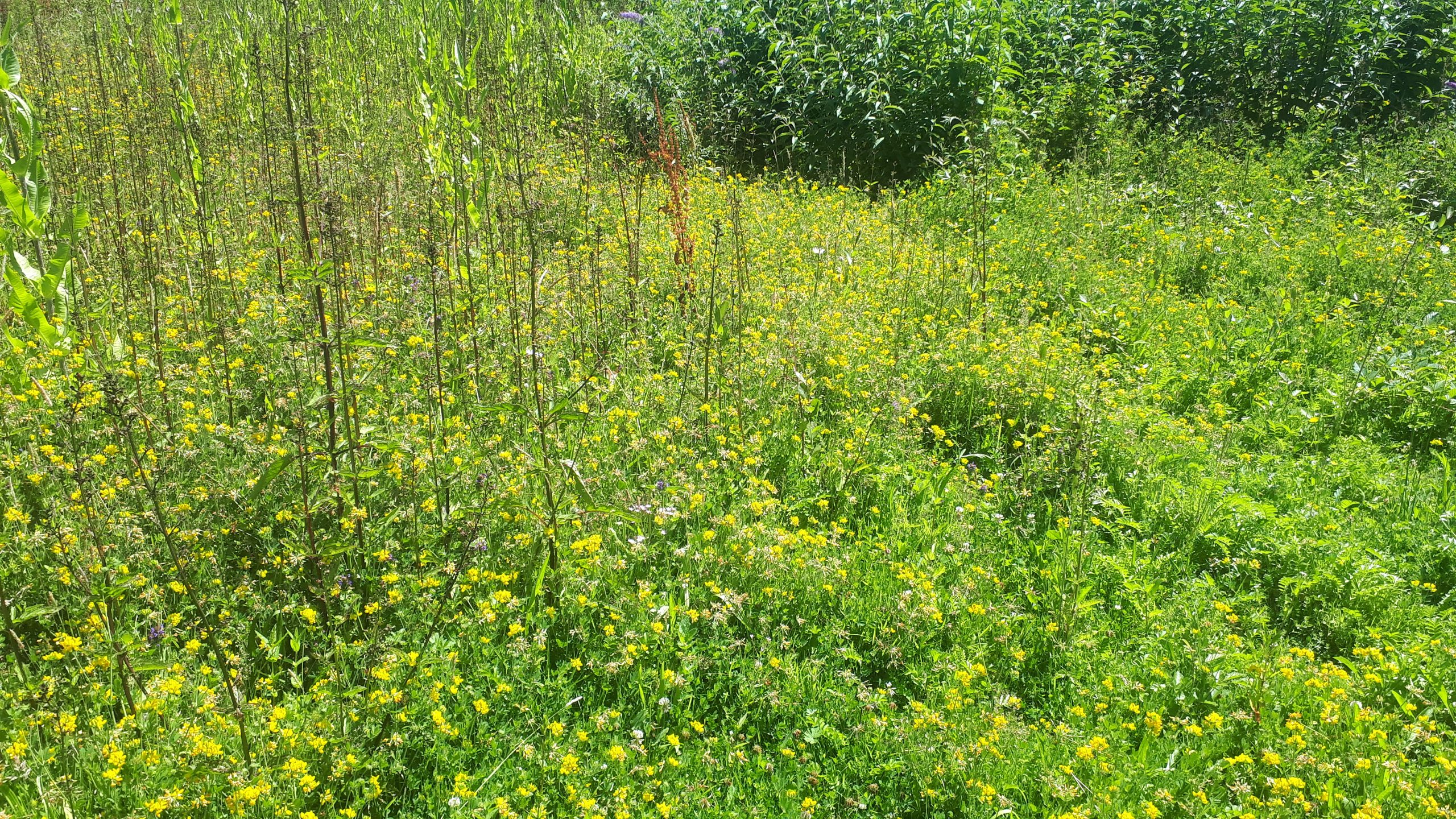
~ minute read.
Every Flower Counts
August 8, 2022
We are committed to supporting biodiversity and sustainability on our campuses. Part of this involves twice yearly flower counts which not only give us an estimate of how many bees we support but also to measure the benefits of changing the mowing regime on areas of land.
Since 2020, Every Flower Counts surveys are carried out by the Grounds Team twice a year, at the end of May and the end of July. They help to track changes and to compare different areas, including unmowed grass areas, wildflower turfed areas, seeded areas and more.
Most areas surveyed are the same each year but some vary, depending on which are being left wild/unmowed.
Alasdair Garnett, FX Plus Groundsperson, explained: “The surveys give us a rough idea of how areas are performing. From the latest (July 22) survey, we can see that our grassland is healthy and benefitting wildlife. And, as we’ve seen recently with goldfinches on the Ox Eye Daisy bank, once the bees have enjoyed the flowers the birds get the use of the seeds.
“We use volunteers to manage and improve the big wild areas, raking the cut grass and sowing wildflower seeds, and this year we also have many young plants grown from seed which will be planted from September onwards. We’ll be organising regular volunteering sessions from Freshers through the winter to help with this.”
Plantlife organises Every Flower Counts as a way of supporting plants and pollinators. The survey allows participants to calculate the difference they are making for nature with their Personal Nectar Score.
Counts include the number of individual, open flowers and flower richness – the number of different flowering species present.
The Plantlife results are displayed differently this year, preventing comparison with previous years but the Grounds Team is hoping to be able to compare future years from now on.
The July 2022 results headlines for Penryn Campus are:
- Number of flowers on all areas surveyed: 2,884,918 (estimate) which gives –
- Enough nectar sugar to support 112,521 honeybee workers per day.
- Enough pollen produced to support 15,857 mining bee brood cells/larvae or around 1586 bumblebee larvae.


